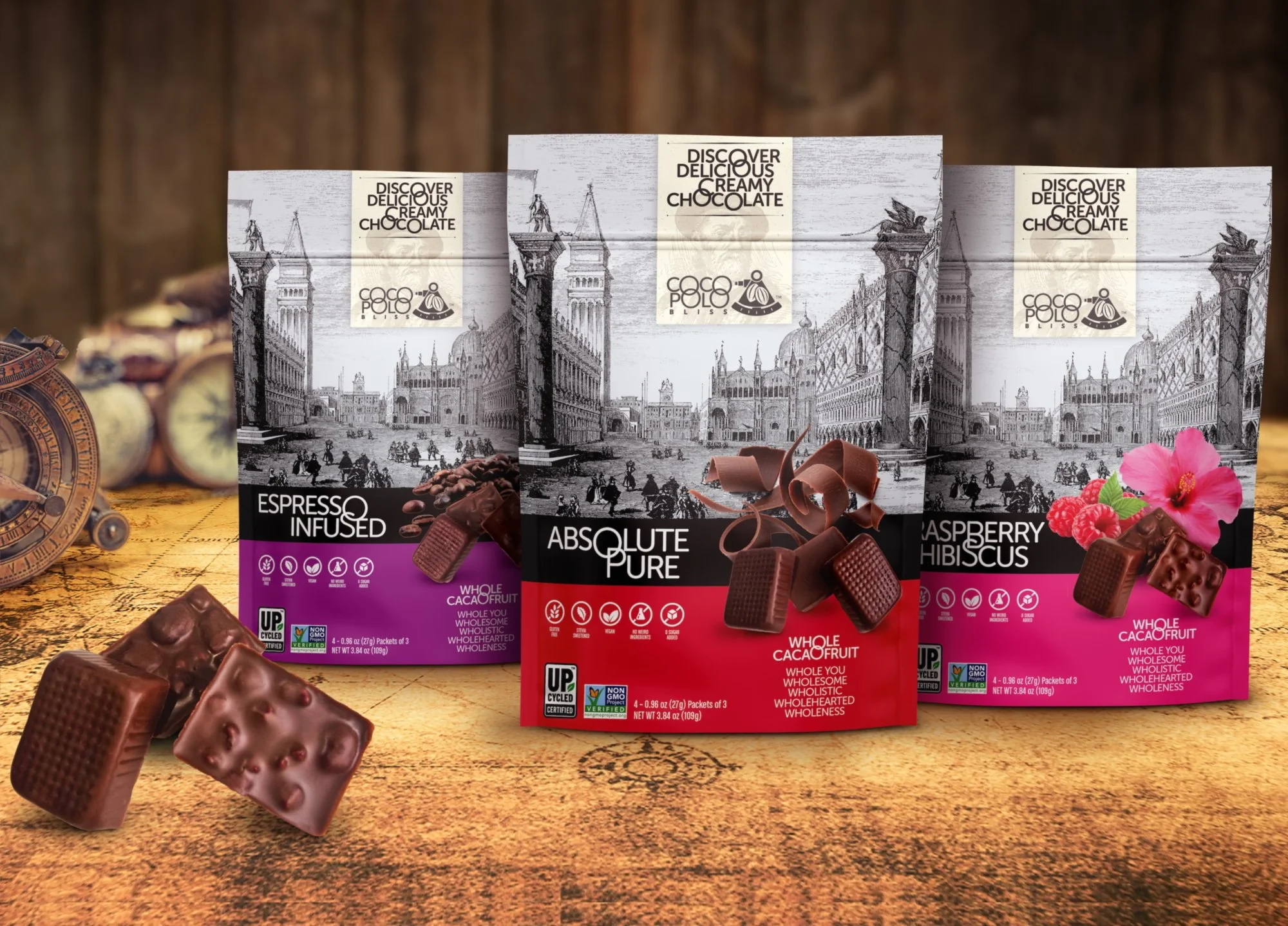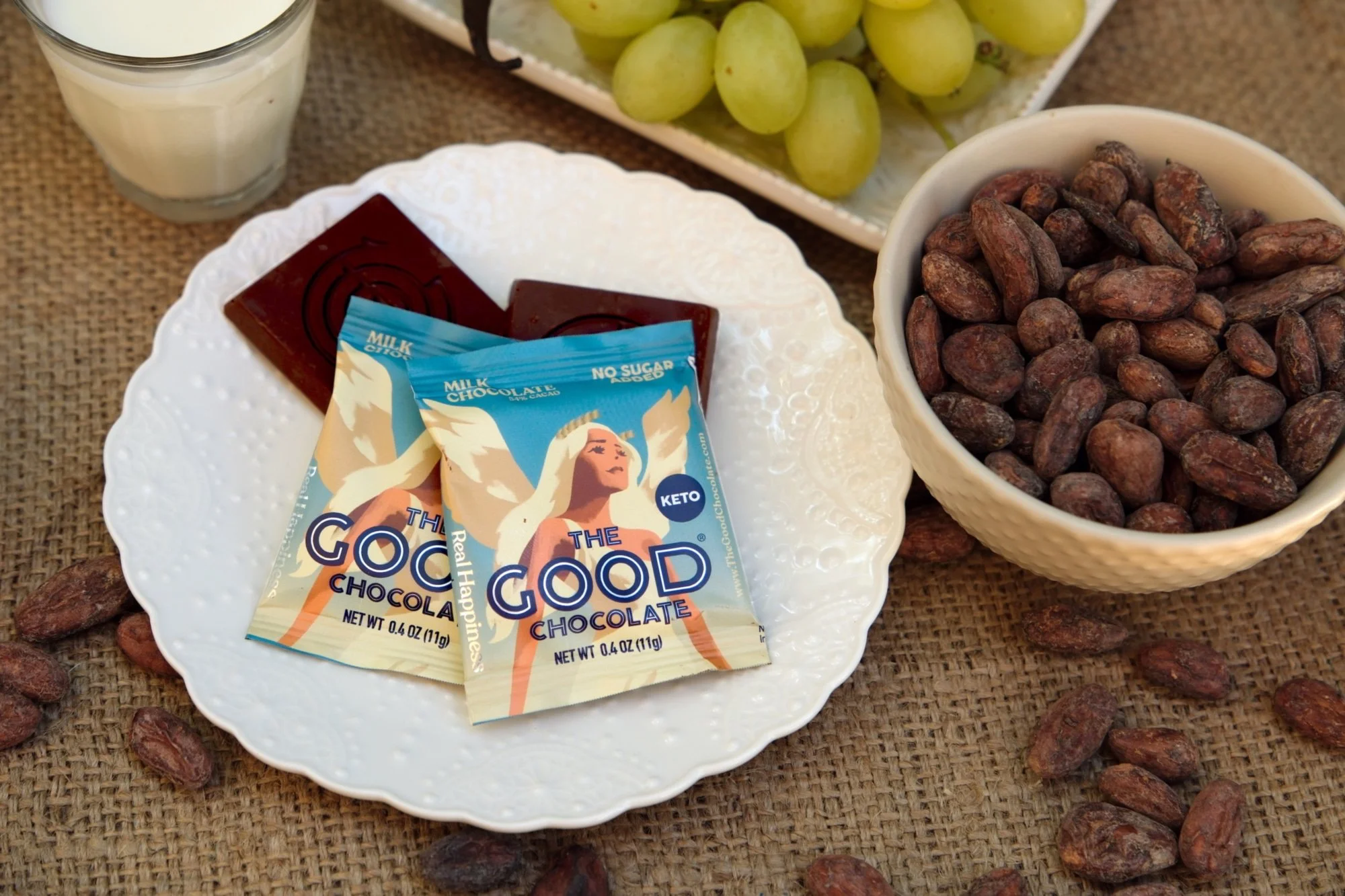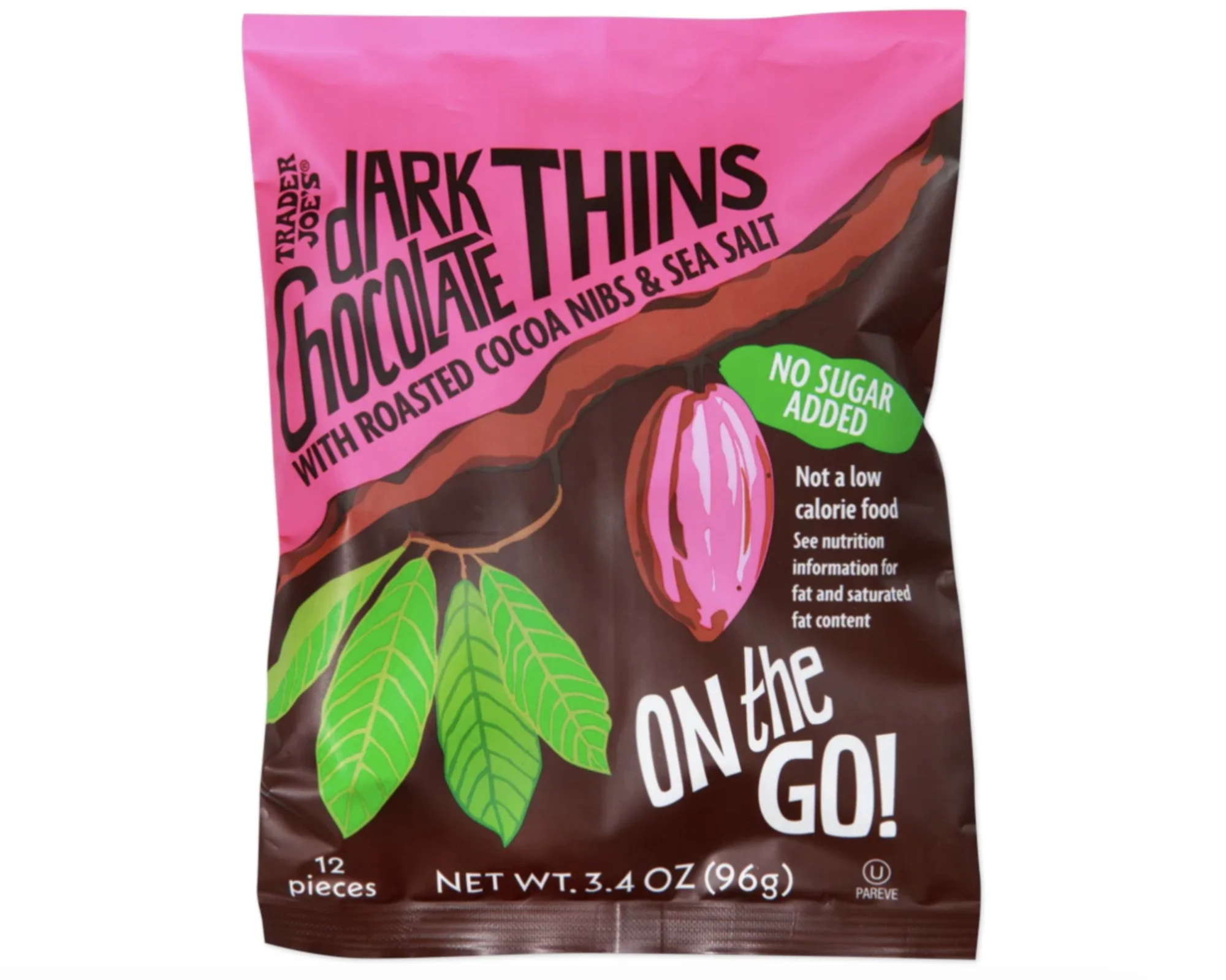6 Best Chocolates for People with Diabetes
“A balanced diet is chocolate in both hands,” or so the mantra goes. But as a lifelong chocolate enthusiast who now happens to live with type 1 diabetes, take it from me: With diabetes, indulging in that sweet balance is a tad more complicated.
Diabetes impairs the body’s ability to either produce or respond to insulin (or both), leading to elevated blood sugar levels. While care plans are usually highly individualized due to different biology, lifestyles, and goals, nutrition guidelines almost universally recommend limiting fast-digesting carbs that spike blood sugar, like those found in most types of chocolate.
An expanding range of sweetener options
Fruit
Isomalto-oligosaccharides (IMOs)
Monk fruit extract
Coconut sugar and cacao pulp (fruit)
Stevia
Erythritol
Mesquite powder
Allulose
Thanks to an expanding range of sweetener options, many chocolate makers have focused on meeting the needs of consumers who have an insatiable appetite for all things cacao yet also need to monitor their blood glucose levels. Some brands use unrefined caloric sweeteners like dried fruit that also provide fiber and nutrients. Other producers turn to no- or low-calorie sugar alternatives that taste better and cause fewer side effects than the artificial sweeteners of years past. Some chocolatiers prefer not to add any sweeteners at all.
When it comes to diabetes-friendly chocolate, there’s no singular best answer. Each option offers trade-offs in flavor, nutrition, and blood sugar impact, so it’s worth experimenting to find what tastes good, feels right, and works for you.
Spring & Mulberry’s Mulberry Fennel bar photo credit Leah Verwey
Raleigh-based chocolate maker Spring & Mulberry is known for colorful, giftable packaging, transportive flavors like Bergamot and Lavender Rose, and quality date-sweetened dark chocolate.
Each bar starts with 72% direct trade cacao. “At 72%, you get all the complexity and antioxidant benefits of dark chocolate without tipping into bitterness,” co-founder Kathryn Shah explained.
The chocolate is then lightly sweetened with dates – about the equivalent of a single date per bar, which fits within the American Diabetes Association’s recommended guidelines.
“This percentage also pairs perfectly with the natural caramel notes of dates. Neither one overpowers the other, so you taste both the cacao’s depth and the earthy, caramel sweetness,” she said.
Along with their flavor enhancement, dates bring fiber, minerals, and antioxidants to the chocolate party. They also have a lower glycemic index (meaning they raise glucose levels less sharply) than refined sweeteners like cane sugar, maple syrup, or honey. Still, they’re high in carbs and sugar and will raise blood glucose – something to keep in mind when monitoring numbers and dosing insulin.
Spring & Mulberry bars also serve as a canvas for layering spices, florals, nuts, and dried fruits (for extra sweetness and fiber). To create signature flavor combinations, Shah starts with an evocative feeling or place, such as a particular spice market, a childhood memory, or even a certain cocktail on vacation.
“We seek contrasts that play off each other,” Shah said, “and always ask: Does this highlight the many facets of natural sweetness? Does it surprise and delight, becoming more than the sum of its parts? And does it allow the chocolate to remain center stage? That’s our litmus test.”
The Mulberry Fennel bar illustrates this with six ingredients – cacao beans, dates, cacao butter, almonds, fennel seeds, and sweet and chewy white mulberries – all of them organic. One serving, or half of a bar, contains 130 calories, 11 grams of carbohydrates and 5 grams of sugar, with 2 grams of protein and 3 grams of fiber, both of which help slow absorption of sugar in the gut.
An assortment of Whims chocolate candy bars and cups. Photo credit Whims
Whims co-founder Leanne Viola describes the brand’s lineup – Peanut Nougat Bars, Caramel Cookie Bars, Peanut Butter Cups, and Dark Chocolate Peanut Butter Cups – as “flavors everyone knows and loves like the kind you’d find in a Halloween bag.” The only difference? Each product is low-sugar, dairy-free, gluten-free, vegan, and free of sugar alcohols or palm oil.
Viola launched Whims with her husband, Jesse Barruch, after changing her diet to manage an autoimmune condition and finding few clean chocolate options. The couple experimented with sweeteners from allulose to sugar alcohols but found the results underwhelming. Their breakthrough in taste came when they discovered isomalto-oligosaccharides (IMOs), which were being used at the time to flavor Smart Sweets, a brand credited with revolutionizing the gummy candy category with its low-sugar approach.
They found success combining IMOs, a low-digestible mild sweetener found in foods like honey and miso, with monk fruit, a zero-calorie, fruit-based sweetener with a low carb rise rate that is more than 150 times sweeter than table sugar. “Nothing matched the taste, texture, and stomach-friendly profile of IMOs paired with a touch of monk fruit,” Viola said, adding that they also selected IMOs for their prebiotic benefits, clean flavor, and pleasing texture.
To achieve a smooth and velvety texture in a dairy-free product, Whims chocolate is made using oat milk. One 16-gram Dark Chocolate Peanut Butter Cup contains 70 calories, 7 grams of carbohydrates, 1 gram of sugar, no added sugars, 1 gram of dietary fiber, 5 grams of fat, and 1 gram of protein.
My personal favorite of the bunch were the Dark Chocolate Peanut Butter Cups, which tasted extremely similar (if not a tad less sweet) to a made-with-sugar counterpart. The Peanut Nougat Bar was also a solid stand-in for any Snickers-like craving. As a Twix fan, I wanted to love the Caramel Cookie Bars, but found that one of the ingredients, coconut oil, to be far too prominent for me.
Blue Stripes Chocolate Covered Whole Cacao Beans
For the Superfood Obsessed
Sweetener used: Coconut sugar and cacao pulp
Blue Stripes Chocolate Covered Whole Cacao Beans. Photo credit Blue Stripes
Chocolate is often cast as junk food, but in reality, cacao is arguably one of the world’s greatest superfoods, rich in compounds like antioxidants and flavonoids that support heart health, brain function, and mood, as well as dietary fiber and minerals like magnesium.
The whole cacao pod is the star at Blue Stripes, a company that utilizes all parts of the fruit to create minimally processed products such as chocolate bars and cacao water. In addition to being beneficial for one’s health, utilizing the whole fruit reduces waste by up to 70% and raises the value of the crop, creating more revenue for farmers. Blue Stripes cacao is sourced directly from farmers in Guayaquil, Ecuador, and certified by the Rainforest Alliance, ensuring it’s not grown on deforested land.
Blue Stripes Chocolate Covered Whole Cacao Beans have a simple and straightforward ingredient list: cacao (beans, pulp, shell, and all), and a hint of coconut sugar and sea salt. The result is a moreish snack filled with beneficial minerals and compounds. The cocoa-dusted beans start out smooth and buttery, only to take a crunchy, nutty turn thanks to the cacao bean. The result is a dangerous snack with a cyclical, sweet-yet-savory quality to it: Before you know it, you’re reaching for another.
That said, it’s important to bear in mind that while coconut sugar contains minerals and has a lower glycemic impact than table sugar, it’s still a form of sugar and will therefore raise blood glucose significantly if eaten in generous amounts. For this reason, it’s best to stick to a serving size (four chocolate-covered cacao beans, or about one-third of a bag). One 28-gram serving has 160 calories, 14 grams of carbohydrates, 5 grams of sugar, 3 grams of added sugars, 3 grams of fiber, and 2 grams of protein.
Espresso Infused, Absolute Pure, and Raspberry Hibiscus from Coco Polo Bliss. Photo credit Coco Polo)
While no food can realistically be consumed with total abandon, Coco Polo Bliss might be as close as it gets.
Founder Diane Yamate created her chocolate specifically for people with diabetes in mind.
“We started Coco Polo by listening to my dad, who had diabetes and struggled to find chocolate he could enjoy,” she said. “He wanted a chocolate that didn’t just meet his dietary needs but also tasted just as good as the sweet treats he remembered sharing with his family.”
Coco Polo Bliss is sweetened with non-GMO stevia, which many medical professionals consider a top choice for managing blood glucose.
“The sweetener I would recommend the most to use on chocolate is stevia. It does not affect blood sugar or insulin levels and thus it is appropriate to most individuals with diabetes,” said Dr. Maria Knobel, a UK-based general practitioner who specializes in lifestyle medicine who is the medical director of Medical Cert UK. “When I switch my patients to stevia-sweetened chocolate [from] sugar-sweetened chocolate, there is frequently a marked difference in glucose control following meals.”
From a sustainability standpoint, Coco Polo Bliss is also as guilt-free as it gets. Similar to Blue Stripes, Coco Polo uses the entire cacao fruit, with Upcycled Food Association Full Certification to boot, as well as oat milk for its minimal land, water, and greenhouse gas consumption, and pea protein for its nitrogen-fixing, land-enriching qualities. The result is a chocolate experience that’s good for chocolate cravings, balanced blood sugars, and the planet.
Coco Polo Bliss comes in three flavors: Absolute Pure, which is unadorned; Espresso Infused, which is studded with whole coffee beans; and my personal favorite, Raspberry Hibiscus. Floral hibiscus flowers and tart, crunchy raspberry fruit with its seeds are a surprisingly addictive contrast to smooth chocolate. One 27-gram package of the Raspberry Hibiscus, which contains a trio of chocolates, has 160 calories, 12 grams of carbohydrates, 3 grams of sugar and no added sugar, 1 gram of dietary fiber, and 2 grams of protein.
While I found I could detect a slight aftertaste of stevia and the earthiness of pea protein, this chocolate line is a feel-good option, particularly for anyone who struggles with portion control, judgement about food, or sustainability concerns about chocolate.
The Good Chocolate
For a Low-Calorie, High-Protein Boost:
Sweetener used: Erythritol, stevia, and mesquite powder
Milk Chocolate Squares are a signature offering at The Good Chocolate, in addition to dark options. Photo credit The Good Chocolate
When The Good Chocolate co-founder Ben Glass cut sugar from his diet and couldn’t find any chocolate to fit his new lifestyle, he created The Good Chocolate, a bean-to-bar chocolate that contains zero sugar and has 45% fewer calories than the average chocolate bar.
“Our mission wasn’t to make something only for people with diabetes or those following keto,” he said, admitting he hadn’t actually heard of the keto diet until customers mentioned it. “It’s really for anyone who wants a healthier option, whether you’re watching calories, net carbs, or just aiming to cut sugar.”
In the process, Glass quickly realized that if he wanted to make a quality product, he would have to own the entire process, from sourcing beans from Nicaragua and the Dominican Republic to roasting, winnowing, grinding, and tempering.
“It takes seven days to make a bar once we crack the bean shells,” he explained. “By contrast, mass-produced cocoa liquor can sit in a commercial fridge for months or even years before it’s turned into chocolate, and the flavor inevitably suffers.”
The chocolate is then sweetened to taste with a mix of erythritol, stevia, and a little-known third ingredient: mesquite powder, made from the ground pods of the mesquite tree.
“Mesquite powder is our secret weapon,” Glass said. “It’s a low-glycemic sweetener with a naturally caramel-like taste that softens the edges of the other sweeteners.”
Although The Good Chocolate labeling makes no diabetic health claims, the company ran informal tests, including one with Tastermonial featuring participants wearing continuous glucose monitors (CGMs).
“Early customers with diabetes told us they didn’t experience noticeable blood sugar spikes,” Glass said, adding that the results of the informal Tastermonial trial showed, on average, a nominal 5 mg/dL increase in blood glucose two hours after eating.
While erythritol is a sugar alcohol (a category of sweeteners that can cause mild digestive issues when overconsumed), compared to other sugar alcohols, it has been found to cause fewer digestive issues and is also known to help prevent tooth decay. It has a slight minty, almost cooling quality to it, which wasn’t unpleasant. I could, however, admittedly detect a saccharin sharpness that was likely attributable to stevia, a plant extract that is several hundred times sweeter than sugar.
That being said, both erythritol and stevia are calorie-free with no impact on blood sugar. This makes The Good Chocolate a fantastic choice for people who simply want to enjoy something sweet without worrying about hour-to-hour diabetes management, and another feel-good option for chocoholics who’d rather have more chocolate than less. The Good Chocolate also has one of the best nutritional profiles I’ve come across: One 30-gram serving of milk chocolate has 130 calories, 14 grams of carbohydrates, only 3 grams of sugar and no added sugar, as well as a surprisingly high level of dietary fiber and protein (4 grams each).
Chocolate options come in a range of flavors, from Mint to Double Crunch Coconut Milk, all housed in renewable packaging. With flavors such as Signature Milk Chocolate and Ethiopian Coffee Milk Chocolate, this chocolate maker is also a wonderful option for milk chocolate lovers. My personal top picks are the Dark Chocolate Ethiopian Coffee, for its extra caffeine lift, as well as Ginger for its clean taste.
Trader Joe’s Dark Chocolate Thins On the Go
For Convenience
Sweetener used: Allulose
Trader Joe’s Dark Chocolate Thins On the Go are sweetened with allulose. Photo credit Trader Joe’s
Earlier this year, Trader Joe’s unveiled a new chocolate offering: thin squares of Colombian dark chocolate sweetened without sugar, studded with cacao nibs for texture, and sprinkled with sea salt for a savory contrast.
The key ingredient that makes this chocolate is allulose, a naturally occurring compound found in trace amounts in raisins, figs, and wheat. Chemically, allulose is a sugar molecule, which means that it looks and tastes very similar to table sugar, although it is only 70% as sweet. Unlike traditional sugar, however, allulose is poorly metabolized due to its molecular structure, which is why it contains 90-95% fewer calories than sugar, has little to no effect on blood glucose, and tends to have fewer digestive side effects than most sugar alcohols.
A relatively new addition to the food aisle, allulose is hard to find in nature in significant amounts. It’s also more expensive to produce, which is why it’s not currently used as widely as other sweeteners such as stevia, monk fruit, or erythritol. While there are a few allulose-sweetened chocolate brands on the market, this version from Trader Joe’s is the most widely available.
Even the greatest skeptic of sugar alternatives may find themselves duped when eating this chocolate. Of all of the low- or no-calorie sweetener chocolate options, I found myself turning to this bar the most. It’s also conveniently packaged for enjoying on the go. Each bag comes with 12 individually wrapped squares, and each 32-gram serving of four squares has 140 calories, 12 grams of fat, 16 grams of carbohydrates, 2 grams of fiber, 0 grams of sugar, and 2 grams of protein.
Zotter’s 70% dark cocoa 30% milk content no added sugar bar. Photo credit Zotter USA
Zotter, one of Austria’s best-known bean-to-bar chocolate makers, offers a wide and varied selection of chocolate bars with either no added sugar, reduced sugar, or alternative caloric sweeteners.
One of its most unique and memorable products is a Labooko dark-style milk chocolate bar produced without sugar or sugar substitutes. Made with 70% cocoa mass, the chocolate is “sweetened” with nothing else but milk powder, which adds a velvety texture and natural sweetness with the presence of lactose, and vanilla bean, which rounds out the taste. The result is a chocolate with a distinctly plush, melt-in-the-mouth texture and an intense, complex nuttiness that can truly hold its own, even without sweetener.
This niche bar may not be the easiest to track down, but I found myself thinking of (and coming back to) it again and again, especially when I craved a luxurious cocoa flavor that would linger on the tongue. It’d be perfect for people who dislike no- and low-calorie sweeteners and don’t require a lot of sweetness. Half of a Zotter dark-style milk chocolate bar (about 32.5 grams) has 210 calories, 10 grams of carbohydrates, 3 grams of total sugar, no added sugars, 4 grams of dietary fiber, and 5 grams of protein.
For dark chocolate and ultra dark chocolate aficionados, Zotter’s Labooko line also includes a super dark milk chocolate that is 80% dark cocoa and 20% milk content with no added sugar, and single-origin fair trade 100% cacao bars highlighting varieties from Madagascar, Peru, and Central America.








